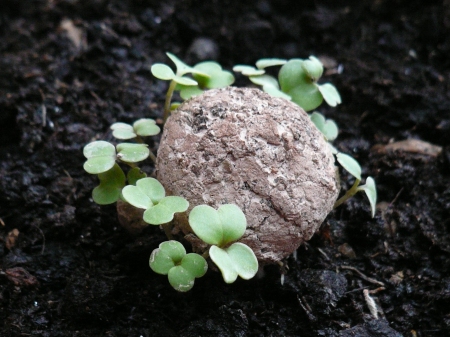Things like this will never look the same after reading our long interview with Sara Redstone, plant quarantine officer from Kew Gardens, London, but they're still very cool.  This is how to make a "seed grenade," "seed bomb," or, more prosaically, seed ball.
This is how to make a "seed grenade," "seed bomb," or, more prosaically, seed ball.
- Seed balls, simply put, are a method for distributing seeds by encasing them in a mixture of clay and compost. This protects the seeds by preventing them from drying out in the sun, getting eaten by birds, or from blowing away.
- I’ve read that some North American First Nations’ tribes used seed balls. More recently natural farming pioneer Masanobu Fukuoka has experimented with them. And, in New York City, seed bombs were used in 1973’s revitalization of the Bowery neighbourhood and the development of the city’s first community garden.
But this wonderfully down-to-earth how-to guide for making everyday seed grenades saves you the hassle of purchasing decommissioned warplanes...
 [Image: "This is what happens just a few day’s after dropping a seedbomb. The rain melted the clay and the compost, feeding the soil surrounding the bomb allowing for other plant growth." Image and text from Guerilla Gardener's Blog].
[Image: "This is what happens just a few day’s after dropping a seedbomb. The rain melted the clay and the compost, feeding the soil surrounding the bomb allowing for other plant growth." Image and text from Guerilla Gardener's Blog].Just pack your seeds in a matrix of red clay, hurl your balls over a fence somewhere, and watch new worlds on the other side grow.